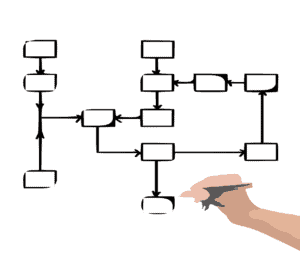The day-to-day operations of any given College or regulatory body are complex and intricate affairs, though sometimes it may not seem that way. You might perform some tasks on a daily basis, running them so often they seem like second nature. But just because you’ve learned how to accomplish a task using the system you’ve got doesn’t mean it’s the most effective or efficient solution possible. There’s a difference between a solution that works well and one that works just well enough.
 Working with mismatched, stitched-together programs to accomplish different tasks is perhaps the most obvious of the problems you may be facing. Take the relatively simple task of mass emailing your membership as an example; depending on your solution, you may be exporting lists of registrants, then uploading them to an email platform such as Outlook or even MailChimp. Presumably you’re using email templates for most (if not all) of your major communications, so you’re probably using Word or some other word processor as well.
Working with mismatched, stitched-together programs to accomplish different tasks is perhaps the most obvious of the problems you may be facing. Take the relatively simple task of mass emailing your membership as an example; depending on your solution, you may be exporting lists of registrants, then uploading them to an email platform such as Outlook or even MailChimp. Presumably you’re using email templates for most (if not all) of your major communications, so you’re probably using Word or some other word processor as well.
The problem gets worse when it comes to completing exam certifications. You wind up needing to export registrant information to Skilsure (or whatever 3rd party provider you’re using), ensuring the data is formatted to their standards and aligns with it properly. Then, when you get the results back, they need to be processed back into your system, whereupon you can start the tedious task of emailing registrants their results.
Each program comes with its own set of limitations and requirements that you need to work around, and a tiny error has the potential to hold up the entire process. Getting your data aligned to meet the requirements of each program can be tedious and creates opportunities for mistakes along the way. Plus, flipping between multiple, mismatched programs just isn’t efficient.
The Benefits of Using an Integrated Solution
The answer is to use what’s known as an integrated solution to bring all the disparate functions of your organization together under a single program. Integrated solutions offer significant benefits over using multiple, stitched-together programs. Some are obvious, some less so, but all are reasons to consider ditching your Frankenstein-software solutions in favor of a more streamlined one.
More Efficient Workflows
 Perhaps one of the most obvious advantages of using an integrated solution is that it provides for multiple more efficient workflows. For example, an integrated solution would remove the need to export/import registrant lists between programs for emailing. Instead of needing to export a list of registrants selected for competence auditing, for example, an integrated solution would allow you to select auditees and notify them through a built-in email platform using a pre-defined template already inside the system. The same is true for jurisprudence exams; a comprehensive integrated solution would allow registrants to register, pay for, and take exams online, with their results being automatically uploaded into their profiles, and notification emails being distributed automatically, without requiring the intervention of College staff.
Perhaps one of the most obvious advantages of using an integrated solution is that it provides for multiple more efficient workflows. For example, an integrated solution would remove the need to export/import registrant lists between programs for emailing. Instead of needing to export a list of registrants selected for competence auditing, for example, an integrated solution would allow you to select auditees and notify them through a built-in email platform using a pre-defined template already inside the system. The same is true for jurisprudence exams; a comprehensive integrated solution would allow registrants to register, pay for, and take exams online, with their results being automatically uploaded into their profiles, and notification emails being distributed automatically, without requiring the intervention of College staff.
Comprehensive Data
Integrated solutions provide comprehensive data about your membership and make it readily available. They also help you avoid redundant data (such as contact information) being stored across multiple programs. Rather than having to pull multiple reports from disparate programs, an integrated solution can provide you with a comprehensive overview of registrants. Email open and response rates, outstanding renewals, competence auditing, jurisprudence and even complaint information can be viewed and analyzed from a single source, and this centralized data pool makes for easier analysis to find even more efficiencies.
Single Vendor for Technical Issues
 This is an advantage of integrated solutions that’s obvious once you think about it, but doesn’t usually jump out at first glance. When you’re working with multiple programs and something goes wrong, it can sometimes be difficult to pin down exactly where the error is occurring. Is there a problem with your Word template? In your spreadsheet data? Inside your email platform? And if you don’t know, how do you find out? In a worst-case scenario, you wind up working with multiple support teams trying to track an error down, which doesn’t just waste time but can also cause serious workflow disruptions.
This is an advantage of integrated solutions that’s obvious once you think about it, but doesn’t usually jump out at first glance. When you’re working with multiple programs and something goes wrong, it can sometimes be difficult to pin down exactly where the error is occurring. Is there a problem with your Word template? In your spreadsheet data? Inside your email platform? And if you don’t know, how do you find out? In a worst-case scenario, you wind up working with multiple support teams trying to track an error down, which doesn’t just waste time but can also cause serious workflow disruptions.
Using an integrated solution, on the other hand, means a single support team with expertise in a specific product and even your unique implementation of it. This makes troubleshooting far more efficient and cost-effective, making for faster resolution to issues and getting you working again faster.
Consistent, Regular Updates
Software is constantly evolving and changing, but it often does so at different rates. Staggered updates can be troublesome when one program adopts a new standard or format and others don’t. You can be left in the lurch scrambling to find a workaround to sudden new misalignments.
A single, integrated solution means no more staggered updates that may interfere with each program’s ability to interconnect with one another. Updates are more consistent and regular, causing less disruption and without the threat of creating misalignments in your data between different software.
Specific Solutions Tailored to Unique Needs
There’s a difference between customizing a software product just to make it work for you, and customizing a real solution to fit your unique needs. Most software is limited in how deeply customized it can be. Forcing a spreadsheet to function effectively for license tracking can not only be an expensive undertaking, but it can also be a lost cause; eventually you’re going to reach the limits of what you can do, and you still may not reach the level of usefulness from it you need. An integrated solution, on the other hand, can be custom-fit to meet your regulatory needs from the beginning. Alinity, for example, uses modules of functionality layered on top of core requirements, and each module can be deeply customized to handle your needs. What’s more, we have specific domain knowledge and experience working with regulatory authorities across the country. Try explaining your different requirements for practicing, non-practicing, student, and limited-practice registers to a spreadsheet specialist. Even if they do understand your requirements, the solution they produce likely won’t be as complete or robust as the one a specialist can provide.
There is no doubt that in the past it was necessary for Colleges to use multiple software solutions to handle different functional requirements. However, modern technology moves at a breakneck pace, and as new computing technology becomes available, the ability to create highly-customized software expands. Integrated solutions represent an opportunity for regulators to take advantage of available technologies that offer deep customization, improved workflow efficiency, and consolidated, stable support for their operations.
